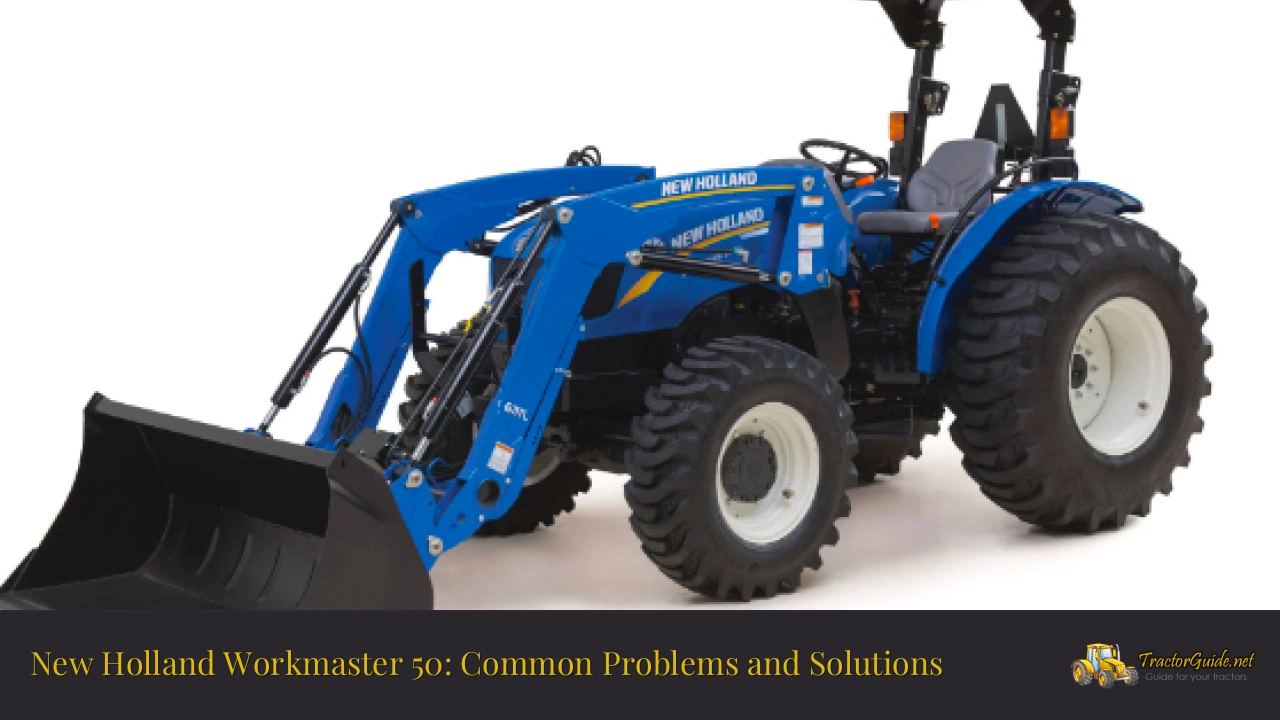The New Holland Workmaster 50 is a popular compact utility tractor known for its versatility and performance. However, like any piece of machinery, it can experience issues that may affect its operation. This comprehensive guide will explore common problems faced by Workmaster 50 owners, their causes, and practical solutions to keep your tractor running smoothly.
Overview of the New Holland Workmaster 50
Before delving into specific problems, let’s review the key specifications of the New Holland Workmaster 50:
| Specification | Details |
|---|---|
| Engine | 3-cylinder, 2.9L diesel |
| Horsepower | 50 HP |
| Transmission | 8×8 Synchro Shuttle |
| Hydraulics | Open center system |
| Lift Capacity | 3,307 lbs (1,500 kg) |
| Weight | 4,630 lbs (2,100 kg) |
The Workmaster 50 is designed for a wide range of agricultural and landscaping tasks, making it a popular choice among small to medium-sized farm owners and contractors. However, users have reported several recurring issues that warrant attention.
Common Problems and Solutions
Seat Safety Switch Malfunction
One of the most frequently reported issues with the Workmaster 50 is the overly sensitive seat safety switch. This safety feature is designed to shut off the engine if the operator leaves the seat, but it can become problematic when:
- The operator leans to check implements
- Lighter operators use the tractor
- The switch is set too sensitively
Solution:
- Adjust the seat suspension to the lightest setting
- Contact your dealer for a potential switch replacement
- Consider adding weight to the seat (only as a temporary measure)
Expert Insight: While safety features are crucial, manufacturers should balance safety with practicality. New Holland is aware of this issue and may release an updated switch in the future.
Front-End Loader Bucket Issues
Some users have experienced problems with the front-end loader bucket, particularly during downward rotation. Issues include:
- Stalling during downward movement
- Inconsistent speed during bucket lowering
- Complete stoppage of bucket movement
Possible Causes:
- Air in the hydraulic system
- Faulty hydraulic valve
- Worn hydraulic pump
- Issues with aftermarket third function hydraulic valves
Solutions:
- Bleed the hydraulic system to remove air
- Check and clean hydraulic valves
- Inspect the hydraulic pump for wear and replace if necessary
- If using an aftermarket third function valve, ensure proper installation and compatibility
Engine and Electrical Problems
Several Workmaster 50 owners have reported issues related to the engine and electrical systems, including:
- Alternator failures
- Neutral safety switch malfunctions
- Engine stalling or entering “limp mode”
Solutions:
- Regular maintenance of the electrical system
- Prompt replacement of faulty components
- Diagnostic tests to identify underlying issues
- Consider upgrading to higher quality aftermarket parts for improved reliability
Preventive Maintenance Tips
To minimize the occurrence of these problems and extend the life of your Workmaster 50, consider the following maintenance practices:
- Regular Oil Changes: Change engine oil and filters according to the manufacturer’s recommendations.
- Hydraulic System Care: Regularly check hydraulic fluid levels and replace filters as scheduled.
- Electrical System Checks: Inspect wiring harnesses, connections, and battery terminals for corrosion or damage.
- Tire Maintenance: Check tire pressure and condition regularly to ensure optimal performance and fuel efficiency.
- Cooling System Upkeep: Clean the radiator and check coolant levels to prevent overheating.
User Experiences and Insights
Many Workmaster 50 owners have shared their experiences online, providing valuable insights:
“Despite the seat switch issue, I’ve found the Workmaster 50 to be a reliable workhorse for my small farm. The key is staying on top of maintenance.” – John D., Iowa farmer
“After addressing the initial problems, my Workmaster 50 has been running smoothly for over 500 hours. It’s all about finding the right dealer support.” – Sarah M., landscaping contractor
Expert Opinion
Agricultural machinery expert Tom Johnson notes, “The New Holland Workmaster 50 is a solid tractor for its class, but like any complex machine, it can have its quirks. Most issues can be resolved with proper maintenance and timely intervention. It’s crucial for owners to establish a good relationship with their dealers and stay informed about potential upgrades or recalls.”
Conclusion
While the New Holland Workmaster 50 has faced some challenges, many of these issues can be addressed through proper maintenance, timely repairs, and open communication with dealers. By staying proactive and informed, owners can maximize the potential of this versatile tractor and enjoy its benefits for years to come.
FAQs
What is the most common problem with the New Holland Workmaster 50?
The overly sensitive seat safety switch is the most frequently reported issue.
How often should I change the oil in my Workmaster 50?
Follow the manufacturer’s recommendations, typically every 100-200 hours of operation.
Can the front-end loader issues be fixed at home?
Some issues, like bleeding the hydraulic system, can be done at home, but complex problems require professional service.
Is the Workmaster 50 suitable for heavy-duty farm work?
It’s best suited for light to medium-duty tasks on small to medium-sized farms.
How can I improve the reliability of my Workmaster 50?
Regular maintenance, prompt addressing of issues, and using high-quality parts can significantly improve reliability.
